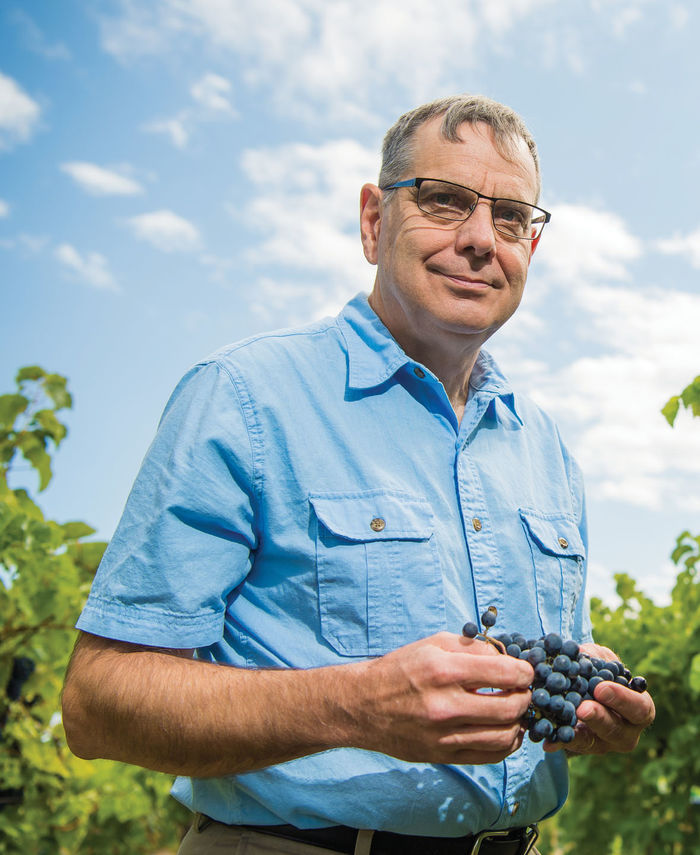Take a drive along Routes 5 or 20 in the northwestern corner of Pennsylvania in September and your nose will clearly communicate to you the abundance—and importance—of the grape-farming industry in Erie County. The sweet smell of ripening grapes hangs in the air along the 60-mile Lake Erie Concord grape belt, which stretches from Erie County, Pennsylvania, to Chautauqua County, New York.
At harvest, an estimated 800 growers pick 30,000-plus acres of Concord grapes—the dark purple, slip-skin fruits used in jams, jellies, and fruit juice. The total economic impact of the region’s grape industry is about $340 million a year, according to The Concord Grape Belt Heritage Association.
So if an invasive fruit fly shows up or a strange leaf fungus appears on the grape leaves, it could be economically catastrophic, not only for individual farmers but for the entire region.
That’s why, for more than sixty-five years, Penn State has been helping growers through the College of Agricultural Science’s Lake Erie Regional Grape Research and Extension Center (LERGREC). The center, housed in a cozy white Cape Cod turned laboratory, is located on 40 acres of land in North East, Pennsylvania.
Experts in the house (and vineyards)
There are currently two full-time University researchers at the LERGREC—plant pathologist Bryan Hed, who has been at the center for eighteen years, and entomologist Jody Timer, who has been there for fourteen years. Each year, they work on ten to twenty projects, most of which evaluate methods of vineyard disease and insect control.
Until recently, the center was run by a University Park entomologist. But this summer, Dr. Mike Campbell, professor of biology at Penn State Behrend, was appointed director of the LERGREC. He’s splitting his time between the center and his teaching and research work at Behrend.
It’s a great fit for Campbell, a botanist whose research interests lie in plants, such as grapes, that experience dormancy. He said he is excited about the possibilities the center provides for collaborative projects with area farmers and applied research opportunities for Behrend students and faculty members.
Working with grape growers is not only good business, but helps to fulfill Penn State Behrend’s mission as part of a land-grant university.
Committed to serving the region
“As part of Penn State, our mission encompasses advancement of the region on a variety of fronts,” said Dr. Ivor Knight, associate dean for research and graduate studies. “We not only educate students, but we work to promote the welfare of our region’s people, businesses, and communities through research and outreach.”
Grape growers regularly turn to the LERGREC for help in identifying, treating, and preventing diseases and pests. They also use the center to experiment with new varieties of grapes and new growing strategies.
“It’s a pretty big risk for a farmer to clear six acres of Concords to try a new wine grape that may or may not work well in this area,” Campbell said. “Sometimes they will ask the center to try it first.”
“The southeastern shore of Lake Erie in western New York and northeastern Pennsylvania is a unique microclimate, so we’re always looking for other crops that could potentially thrive here.”
